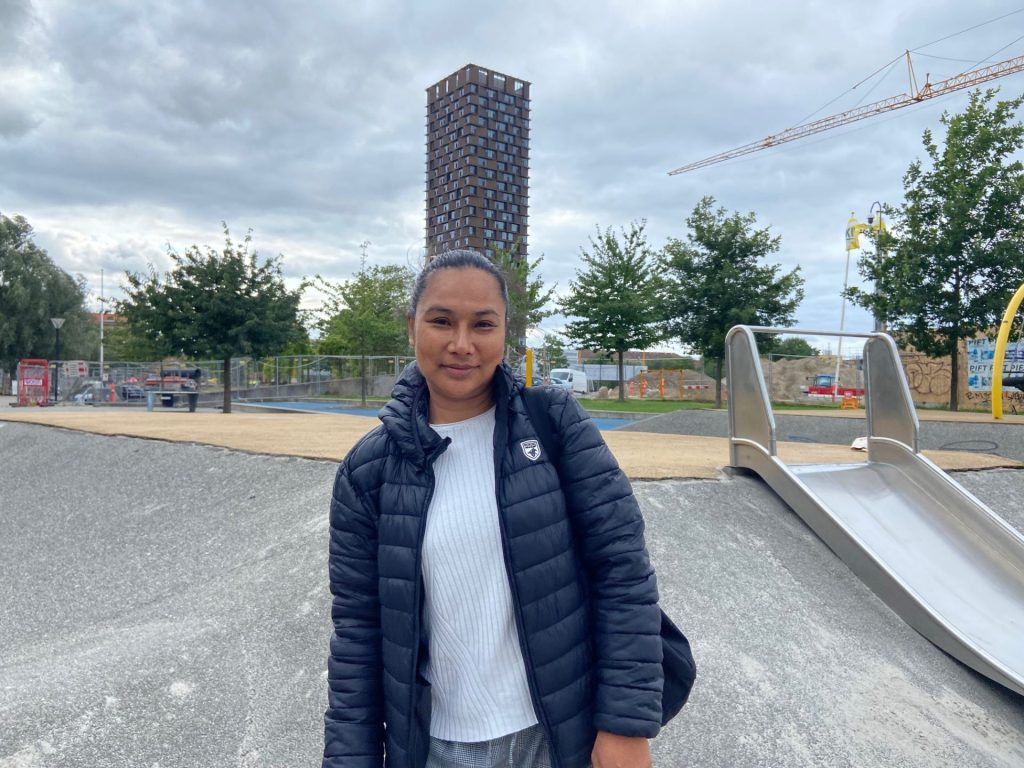
16th september 2022 by Cleo Ding and Dominique Nash
The community centre Mimersparken in Nørrebro is changing its direction and initial aim. The government has instructed the construction of new apartments in a higher price category. Which has resulted in Mimersparken to become a community house for people from all social-economics backgrounds.
Streets within the neighbourhood of Nørrebro are bustling and people of all backgrounds are on the move. The local benches are filled with old folks and some young people are having a coffee. Even though the government has new plans for the neighbourhood, current residents have adapted to the changes and remain ever so positive.
When the government announced its plan ‘One Denmark without Parallel Societies: No Ghettos in 2030’, it meant 260 homes were abolished in Mjølnerparken. The budget which was made available is 12 billion kroner (1.6 billion euros) to demolish and regenerate housing in underprivileged areas between 2019 and 2026.
The stress of putting families at risk, is something Sara Kadim, a teacher who has worked at Mimersparken for five years, recognises and sees with her own eyes.
Mimersparken has been a growing place, meanwhile original residents are forced to move out.
The community building is for all ages from zero to 99 years old. Residents started off from different cultural and religious backgrounds with different political opinions, according to Kadim.
“We try to build bridges. To make this place even more safe and make people come together, so they can actually use each other and be together because they have more in common than what they think they have in the first place,” said Kadim.
The most well-known part about Mimersparken is their large playgrounds and plenty of resources. Something which local resident Christine Phillip, a banker, echoes.
“Whenever we are around here, we visit the playground at Mimersparken. My children are exposed to people all over the world. So it’s really nice to be integrated and for my children to grow up in such a vibrant place.”

‘IT WASN’T ALWAYS LIKE THAT’
The past five or even six years have been turbulent times because of the gang wars and shootings, said Kadim.
“We made the art project from my window, kids would freely paint or draw what they saw from their bedroom window. A lot of the kids used this product to open up about the anxiety and fear they had. Many were afraid to even address this fear, and this was a way to open up about the topic.”
Sara and her colleagues are aware of what has been going on and have assisted the needs and responses of the children who come to the community house.
May Nielsen, a health service assistant and a parent of a two-year-old who has lived eight years in Nørrebro, said she treasures the diversity in this neighbourhood but feels hopeless at the government ghetto policy.
“It used to be an empty place where people throw things, but now it’s a shame because they (the City) build so many things around here,” said Nielsen.
Wanting to break cultural barriers such as moving to a new place, having a chat or wanting some company still remain the prime reasons for adults visiting Mimersparken in Nørrebro.
Unemployed Hussam Ziadan who has lived in the Nørrebro neighbourhood for 40 years said there remain many good housing options however the price has gotten more expensive.
“Yeah, it’s hard to leave. Recently, it has become more expensive. There are many available homes and living is very good here,” Ziadan said.
Roger Buch, a political scientist and lecturer with DMJX, predicts the immigration policies remain unchanged after the upcoming parliamentary election, because immigration is not the winning issue at this year’s election.
“In a way the politicians are going further than maybe the ordinary citizens really want them to go. But on the other hand, nobody dares to go to a more soft line on immigration,” said Buch.
A GRAND START TO A NEW AIM
Mimersparken’s future will be exciting, Kadim said. Within the on-going construction, there will be space for a fruitful complex and new resources.
“They are building so much and their departments are on the ground which will really open things up. They will make shops, coffee shops, cafeterias and you will be able to shop for groceries. So it’s going to be very different when they open up.”
Kadim remains hopeful and is interested in continuing the social part of her work. Where the new direction of Mimersparken goes will be uncertain but it will cater the needs of the new residents and their ways. Mimersparken will continue to build bridges within the social community of Nørrebro.
Those who visit are free to take a look around and join within the local activities.
(This article is written for Dutch expats and this article can be read on the EU.observer.com)
